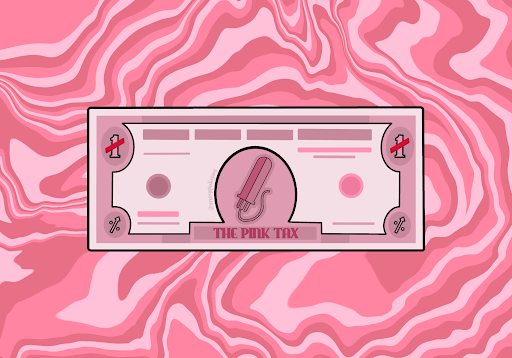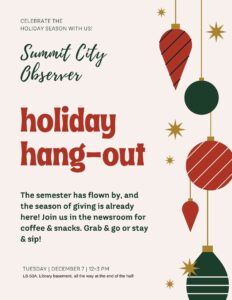Jordyn Bilger
We all know the saying “beauty hurts.” But it might be hurting more than just our feet, it may also be hurting the bank accounts of many women.
It’s no secret that women have experienced different forms of oppression since the beginning of time. From not being able to work outside of the home to not being able to vote, a lot of changes have been made in efforts to get equal rights and treatment for the female gender.
But there is something that women may not be aware of that is part of this ongoing struggle: the pink tax.
This is not something that is like the sales tax applied at a register, but rather it is included in price. This is something that has been around since the 1990’s and continues to be seen in comparing the cost of men’s and women’s products.
Males pay less than females for everyday products 42 % of the time, according to an investigation conducted by personal finance writer Candice Elliot.
This is especially seen in clothing items where women’s clothes are of lesser quality than men’s but are often significantly higher in price. With thinner materials and often less fabric used in women’s clothing, the prices even for the same brand are raised compared to pricing of men.
The reason this higher price is called pink tax is because the color pink is marketed towards females, and some products cost more just for being the color pink and sometimes purple.
This extra cost can give those who struggle with money even more trouble.
“As a full-time college student with not a lot of funds, having to pay extra on almost all of my everyday products just makes it that much harder to save and budget,” said college student Emma Yager.
Are there any brands working to stop the pink tax? In an interview with Glamour, Nitasha Mehta, the head of vendor marketing for Boxed, said that she spoke with the CEO of the company about the difference in pricing. Since then, the company has been working to make fair prices for both genders.
Billie is another company that works to charge women the same prices as men. Almost all women’s razors cost more than mens for a lower quality. Billie is an online razor company that allows women to pay low prices for a higher quality razor and can be purchased as a subscription.
Leah Bourne from Glamour said, “The pink tax is frequently hard for stores to avoid unless prices are lowered by the companies that make the products, and since so many people are unaware of these hidden fees, it doesn’t get talked about too often.
Leslie Owen, a financial advisor for Allen Superior Court, said that she has never really noticed the pink tax because it has just been there for as long as she can remember.
This is something that with more spread of information on the topic, could be changed.





